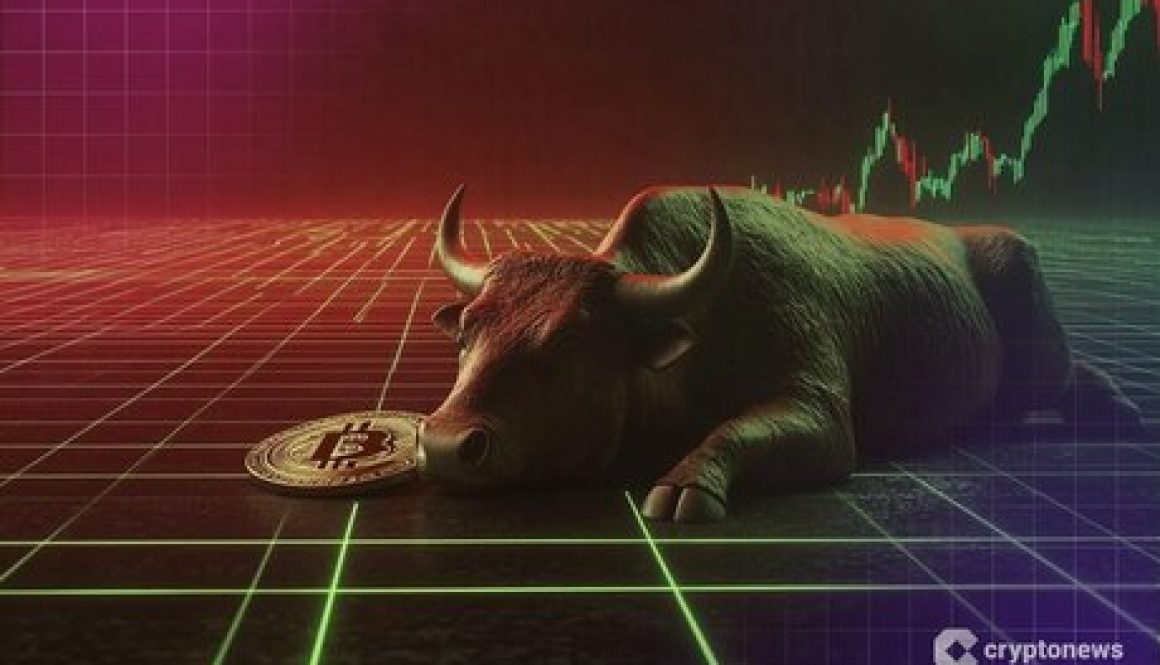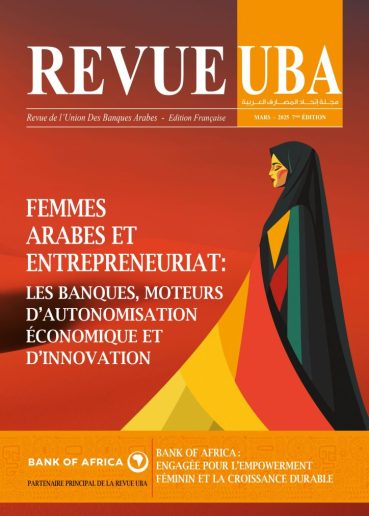
- Arab News
- Articles
- English News
- Gallery
- International News
- Magazine
- Magazine Article
- UAB News
- Uncategorized


Coinbase CLO Presses SEC Over Withheld ETH2.0 Docs, Demands Transparency on “Ecosystem” Test
(Crypto News)-23/04/2025
Coinbase is pushing the U.S. Securities and Exchange Commission (SEC) to release internal documents related to its now-closed investigation into Ethereum (ETH) 2.0.
The exchange is calling for clarity on the agency’s shifting stance toward the second-largest cryptocurrency by market cap.
Coinbase Seeks Answers on SEC’s Changing Ethereum Stance in FOIA Lawsuit
Paul Grewal, Chief Legal Officer at Coinbase, disclosed on X that the company has obtained a list of withheld materials from the SEC in its ongoing Freedom of Information Act (FOIA) lawsuit.
The documents, listed in a “Vaughn index” provided by the SEC, offer a glimpse into the agency’s internal deliberations over whether ETH should be classified as a security.
Among the documents are a May 2022 staff analysis titled “Analysis of Ethereum 2.0 under Howey,” a February 2023 email labeled “RE Is Ethereum a security,” and an April 2023 memo potentially provided to SEC Commissioners ahead of a vote to investigate Ethereum 2.0.
The list also includes various internal communications from 2023 and 2024 discussing ETH’s legal status, culminating in what appears to be a “Case Closing Narrative” for the investigation.
Grewal said these materials are critical to understanding how and why the SEC changed its position on ETH.
“Why did this asset pass muster under the made-up ‘ecosystem’ test but not others?” he wrote. “We need a full airing of past mistakes to avoid repeating them in the future.”
The SEC had previously stated in 2018 that ETH was not a security. However, in 2023, under Chair Gary Gensler, the agency quietly initiated a probe into Ethereum 2.0, asserting jurisdiction over the asset as a security.
That move drew widespread criticism and culminated in a lawsuit filed by Ethereum developer Consensys on April 25, seeking to stop what it called an “invalid” investigation.
Following growing political and public scrutiny, and a June 7 letter from Consensys urging the SEC to confirm whether May’s spot ETH ETF approvals signaled ETH’s commodity status, the agency notified the firm that it had closed the investigation.
In a June 19 post, Consensys said, “The Enforcement Division of the SEC has notified us that it is closing its investigation into Ethereum 2.0.”
The firm said the decision confirms that the SEC will not bring charges related to ETH sales, calling it “a major win for Ethereum developers, technology providers, and industry participants.”
State-Level Crackdown Continues as Oregon AG Targets Coinbase Despite Federal Retreat
The regulatory tide may be turning at the federal level, but state officials aren’t backing down.
Just months after the SEC dropped its landmark case against Coinbase, Oregon Attorney General Dan Rayfield is preparing a new lawsuit accusing the exchange of selling unregistered securities in the state.
Coinbase’s Chief Legal Officer, Paul Grewal, dismissed the move as a “copycat case,” directly echoing the SEC’s now-withdrawn 2023 complaint.
“The attorney general’s office made it clear they are literally picking up where the Gary Gensler SEC left off,” Grewal stated.
The case is part of the growing concerns around a fragmented U.S. regulatory environment, where state-led actions could undermine recent federal clarity.
Although the SEC under Acting Chair Mark Uyeda has taken a less combative stance, some state authorities appear ready to continue enforcement efforts independently, keeping the pressure on major players like Coinbase even as federal momentum fades.

The Bitcoin ‘Honeymoon’ May Be Over. Here’s Why
(Crypto News)-23/04/2025
CryptoQuant CEO Ki Young Ju recently said that the Bitcoin bull market is over, with “6–12 months of bearish or sideways” trading ahead. But is the Bitcoin bull cycle—a period when BTC prices consistently rise—truly finished?
Young Ju’s bearish outlook is based on a gap in a metric called “realized capitalization” or “realized cap,” which tracks the amount of money flowing into Bitcoin versus its market capitalization.
Posting on X, Young Ju noted that realized cap-based indicators “show a lack of new liquidity.” Inflows into spot Bitcoin exchange-traded funds (ETFs) have been negative for the past three consecutive weeks.
According to CoinShares, last week alone, outflows from Bitcoin-specific funds accounted for 94%, or $751 million, of all outflows from cryptocurrency investment products.
As a result, prices have been choppy due to overwhelming sell pressure—a pattern historically linked to bear markets. As of this writing, Bitcoin is trading at $85,300, down 22% from its peak of about $108,000 in January.
Young Ju does not expect the Bitcoin price to break its all-time high for at least another year. But he also does not see the asset falling by as much as 70%, like in previous bull cycles. He says macroeconomic uncertainty, epitomized by Trump’s trade wars, will make things harder for Bitcoin.
‘Irrational Markets’
In an interview with Cryptonews, Hillary Adler, co-founder of cross-chain blockchain platform BitcoinOS, said the current cycle defies historical precedents, with markets in an “irrational phase” due to Trump’s so-called reciprocal tariffs.
“There’s no question that this ‘four-year-cycle’ appears different from those before,” she said. “Meme coin mania took place in early 2024 after the BTC ETFs went live, rather than early 2025. Bitcoin dominance keeps climbing, and altseason is nowhere to be found.”
In the long term, however, Adler remains bullish, saying Bitcoin’s resistance to censorship makes it a tool for ‘permissionless’ international trade in an increasingly fragmented economic environment.
“The negative tariff impact on Bitcoin is temporary, based on irrational market fear and lingering correlations to equities. Fundamentally, BTC shines in a high tariff world, as BTC allows for permissionless trade with no taxes whatsoever.”
BTC was up more than 7% in the hours following Trump’s 90-day pause on tariffs on April 10. The tariffs, first announced on April 2, had sparked widespread sell-offs across global stock markets, including crypto.
At the time, Bitcoin slumped below the psychological $80,000 mark to about $73,000. Analysts say markets may stay jittery expecting long-term powerplay between the world’s two biggest economies, China and the United States.
While Trump eased tariffs for other countries to 10%, he raised duties on Chinese imports to 145%. China retaliated by raising tariffs on US imports to 84% and suspended exports of rare earth minerals – a key metal used in the manufacture of cellphones and computers – to America.
Alexandr Kerya is the VP of product management at CEX.io, a crypto exchange. Speaking to Cryptonews, Kerya said Bitcoin has shown greater resilience to this tariff-related shock than the wider stock market.
“When Trump announced a 90-day pause on some tariffs, the S&P 500 rebounded sharply, while Bitcoin’s reaction was more muted, suggesting that its earlier decline was more of a collateral impact,” he said, adding:
“Tariff threats could trigger short-term volatility, [but] they also reinforce Bitcoin’s appeal as a hedge, especially if trade tensions spark inflation concerns or prompt significant monetary responses from central banks.”
Kerya noted that BTC tends to initially move in line with traditional risk assets during times of chaos. But over time, it “shows a better recovery rate than traditional markets once the immediate panic subsides.”
A report published by asset manager BlackRock in September of last year appears to back up this store-of-value narrative. It underscored Bitcoin’s resilience during geopolitical crises compared to stocks.
‘Bitcoin Bull Market Is Not Over Yet’
Bitcoin’s selling points may be decentralization and scarcity, but its record highs between December and January have been largely centered around Donald Trump.
The 78-year-old U.S. President inspired market confidence not only with his radical propositions but also his crypto-friendly policies. But Trump’s one-man reengineering of global financial markets has not spared his crypto constituency.
As Kerya, the CEX.io exchange executive, notes, the current Bitcoin bull cycle is a “notable anomaly.”
For example, Bitcoin reached its then-all-time high in March 2024, weeks before an event that reduces the amount of BTC entering into circulation known as “the halving.” It was a break from past trends, Kerya says.
“This event [Bitcoin ATH before halving] caused several indicators to turn ‘weird,’ leading to deviations from multiple historical cycle patterns.”
Kerya cited a July 2024 report by Capriole Investments, which highlighted 13 on-chain indicators used to identify cycle tops—a period when prices are thought to have peaked. He detailed that at least 62% of the indicators pointed to a “further bearish market. “
“At that time,” said Kerya, “Bitcoin entered a seven-month consolidation phase between March and October, which, in retrospect, can hardly be classified as a bear market.” Now, history may be repeating itself. As Kerya tells Cryptonews:
“…once again, several well-established indicators suggest the beginning of a bear market, though it may ultimately prove to be just a prolonged consolidation.”
One argument supporting this view is that key cycle top indicators like the Pi Cycle Top “remain far from signaling a definitive” high for Bitcoin.
Also, BTC’s liquidity held steady during the first three months of 2025, with a 1% market depth, to end the quarter slightly higher at $500 million, per data from Kaiko Research.
Other indicators, like global liquidity, have also hit record highs. BTC has historically shown a two-to-three-month lag behind this metric.
For Kerya, all this points to a “potential market recovery” in the short term.
“Bitcoin’s bull cycle is likely not over yet, and there appears to be room for another upward move. But the cycle may be entering its later stages, as a growing number of indicators point to the possible emergence of a cycle top.”
Will Bitcoin Price Hit $200,000?
Even if Donald Trump goes all out on tariffs, his sledgehammer approach may benefit Bitcoin more than his crypto-friendly policies.
China, the U.S., and others are expected to strategically weaken their fiat currencies for trade advantage, opening up another use case for Bitcoin, which has often been spoken of as the digital equivalent of gold.
BitMEX co-founder Arthur Hayes suggested that BTC could benefit from the trade wars. He believes the tariffs are “correcting” what he calls “global imbalances,” and the resulting “pain” will force the U.S. Federal Reserve to print more money and cut interest rates to support the economy.
According to Hayes, all these factors will lead to more capital seeking refuge in safe-haven assets such as Bitcoin and gold, pushing prices higher.
Adler, the co-founder and chief commercial officer of BitcoinOS, agreed with Hayes’ perspective.
She told Cryptonews that, unlike previous cycles, “Bitcoin isn’t necessarily facing a 70% unwind, but just a multi-month chop period before breaking all-time highs.”
“This would be similar to the 2021 bull market, and is also reinforced by Trump’s latest tariffs, which have taken wind from the sales of BTC, stocks, and every asset you can name,” Adler said, noting:
“The negative impact tariffs would have on the global economy will incentivize central banks to return to quantitative easing and lowering interest rates, which is extremely bullish for scarce assets like Bitcoin. It’ll just take a few months to get there, but for now, we wait.”
Bitwise chief investment officer Matt Hougan is even more bullish. Last week, he doubled down on his December prediction that Bitcoin could hit $200,000 before the end of 2025.
He said it would take nothing less than Trump’s tariffs and a weaker dollar to propel BTC to its new all-time high.
In a blog post, Hougan referred to an April 7 speech in which Steve Miran, chair of the White House Council of Economic Advisers, criticized the US dollar’s reserve status for distorting global trade and undermining American manufacturing.
“In the short term, there’s a well-documented inverse relationship between the U.S. Dollar Index (DXY) and Bitcoin,” Hougan noted. “Dollar down equals Bitcoin up. I expect this pattern to continue.”
According to TradingView data, the DXY, which stacks the dollar against six major currencies, has dropped over 7% since the start of 2025.

Koreans HODLing Hit a Record $73.4B After Trump’s Crypto Push
(Crypto News)-23/04/2025
South Koreans are HODLing crypto assets worth around $73.4 billion on domestic crypto exchanges, the nation’s central bank has claimed.
Busan Ilbo reported that the total market capitalization of the crypto held in domestic wallets surpassed the 100 trillion won mark ($70.5 billion) for the first time in December 2024, per Bank of Korea (BOK) data.
Koreans HODLing Billions of Dollars on Domestic Platforms
The BOK published the data in its latest payment settlement report. This, the media outlet noted, is the largest monthly total since the BOK began publishing crypto-related data.
Experts appear to agree that the election of Donald Trump to the White House in November 2024 sparked a flurry of crypto purchases in South Korea.
The December figure increased by 987 million compared to November. At the end of October last year, weeks before the US presidential election, South Koreans HODLed “only 58 trillion won ($41 billion).”
The x2.2 rise in the two months from October to December 2024 was due largely to President Trump’s “crypto-related manifesto promises,” the outlet added.
Transaction volumes also spiked after the elections, the BOK noted. The average daily transaction volume hit the 17.2 trillion won ($12.1 billion) mark in the last days of 2024. This marked a five-fold rise on October’s volume figures.
Trump Not the Only Factor Spurring Growth, BOK Says
However, the bank suggested that domestic conditions also proved conducive to crypto market growth at the end of 2024.
The BOK’s report noted that the Virtual Asset User Protection Act, a law that includes several clauses pertaining to crypto user protection and unfair trading, came into force in July.
Lawmakers were due to begin work on “second-stage” discussions to improve the act in November the same year.
Ultimately, this process was largely derailed by the political chaos that ensued after President Yoon Suk-yeol’s attempt to impose martial law on December 3.
However, regulators and lawmakers alike have vowed to return to the matter of crypto sector reform after June’s presidential elections.
And the BOK suggested that it also expects progress in this area before the year is out.
Many industry insiders have expressed dismay at the fact that South Korean companies are still unable to launch cryptoassets or stablecoins on the domestic market.
Firms are also still blocked from using their balance sheets to buy Bitcoin (BTC) and other tokens. However, regulators have indicated that this is likely to change before the year is out.
Critics claim that the delay has allowed the US and Japanese crypto sectors to grow while South Korea’s blockchain industry stagnates.
Stablecoin Regulations Ahead
The BOK’s report suggested that regulatory obstacles are set to be removed in the months ahead.
The bank wrote that a stablecoin regulatory “system” was likely on its way. But the BOK expressed concerns about the rise of stablecoins, writing:
“Unlike conventional virtual assets, stablecoins have the inherent characteristics of a means of payment. If they are widely issued and circulated and used as a means of payment to replace legal tender, they may have negative effects on the implementation of central bank policies. Monetary policy, financial stability, payments, and settlements could all be affected. A separate regulatory ecosystem is needed.”
The bank promised to “actively participate in future discussions on stablecoin legislation.”
It said it intended to liaise with the Virtual Asset Committee, a regulatory advisory body designed to form South Korean crypto policy.
The BOK said it would provide the committee with “opinions on the direction of stablecoin regulation from a central bank’s perspective.”

Paul Atkins Sworn in as SEC Chair, Boosting Crypto-Friendly Sentiment
(Crypto News)-23/04/2025
Paul Atkins was sworn in as Chairman of the US Securities and Exchange Commission on Monday, marking a leadership shift that is being welcomed by the digital asset industry.
The swearing-in followed his confirmation by the US Senate on April 9, after President Donald Trump nominated him late last year.
“I am honored by the trust and confidence President Trump and the Senate have placed in me to lead the SEC,” Paul Atkins said in an official statement.
“As I return to the SEC, I am pleased to join with my fellow Commissioners and the agency’s dedicated professionals to advance its mission to facilitate capital formation; maintain fair, orderly, and efficient markets; and protect investors.”
He is expected to have a private swearing-in ceremony with Trump at the Oval Office on Tuesday.
Paul Atkins Seen as Regulatory Counterweight After Years of SEC Crackdowns
Atkins, who served as an SEC commissioner from 2002 to 2008, has long advocated for market-driven regulation and is known for his alignment with pro-business and innovation-friendly policies.
His return comes at a time when the crypto industry is increasingly pressing for regulatory clarity after years of uncertainty and enforcement-heavy oversight under previous leadership.
Atkins’ appointment is seen as a potential turning point for digital asset markets. He has supported a more measured regulatory approach through his work with the Chamber of Digital Commerce. He has called for clear rules that do not stifle innovation. Further, his stance is viewed as a counterbalance to past SEC actions that critics say hindered industry growth.
Crypto Industry Sees Ally in SEC Chair With Direct Market Stakes
Financial disclosures filed in March showed that Atkins has significant exposure to the crypto sector. He reported up to $6m in digital asset investments. These include equity stakes in Anchorage Digital and tokenization platform Securitize. He also holds a limited partnership in the crypto-focused fund Off the Chain Capital. His total family assets may exceed $580m, mostly tied to his consulting firm and his wife’s business.
Atkins’ financial interest in crypto firms has drawn scrutiny but also shows his familiarity with the sector.
As a result, industry participants hope his leadership will bring more nuance to regulation. They are calling for a clearer and more transparent framework. Key areas of focus include token classification and custody rules.
His confirmation comes as debate over crypto regulation intensifies in Washington. Lawmakers remain divided on how to foster innovation. They also differ on how best to protect consumers.

Crypto’s Banking Battle: Are Regulators Going Too Far?
(Crypto News)-23/04/2025
While debanking has been happening for years, with cash-heavy, small and high-risk businesses impacted the most, its influence on crypto businesses has been particularly severe.
How? What can be done to improve the situation? Let’s see.
The Nature of Debanking in the U.S.
Debanking is a situation when most banks decide to stop providing services (closing bank accounts, etc.) to a certain person, company, or whole industry — even at the cost of losing a substantial amount of banking fees. However, since banks want to earn money, they will debank someone only when they are pressured to do so (usually by the government).
The push for debanking the crypto industry has been done by government agencies in a sort of a clandestine way, by a series of vague guidelines and consultations by the regulators, all targeting the crypto businesses. Banks don’t want to lose their banking licenses and are known to closely follow the regulators’ wishes. It’s a calculation — it’s better to lose a couple of clients than to be investigated by regulators.
An example of this came when the FDIC sent letters to banks, advising them to “pause” their crypto-related activities. Although this was not an explicit instruction, banks understood the message: continuing such activities could put their regulatory standing at risk. These pressures, especially paired with offline threats, created a strong sense of unease when it comes to onboarding crypto clients — and the banks just did not want to take the risk.
This hit crypto companies hard… Crypto companies struggled to maintain essential banking services, which had a direct impact on their operations (paying employee salaries, renting office spaces, or conducting basic financial transactions). It creates an ironic situation: the industry that aims to “revolutionize financial services” is not able to access traditional banking infrastructure.
How Debanking Affects Crypto Adoption
The risk of debanking has, of course, been detrimental to crypto adoption…
If you are, let’s say, a small vendor who wants to accept crypto payments and is deciding to do it or not, you will need to weigh the benefits of accepting crypto against the risk of losing access to banks. Unfortunately, the risk of losing access to traditional banking services could easily outweigh the advantages of lower fees or faster settlements.
On the other hand, if you are a crypto service provider or a Web3 development company, the risk of debanking is even more pressing. Losing a bank account can mean payroll disruptions, operational instability, and an overall reduction in business confidence. There’s no way around it, since these companies’ core business is related to crypto, if the debanking is happening, they will be debanked.
In many ways, debanking has acted as a Sword of Damocles, hanging over the heads of those who “dare enter the Web3 realm.”
Risks of an Anti-Debanking Law
I have heard opinions that passing an anti-debanking law could introduce new risks. However, I would argue that there will be no tangible increase in them for any of the three. If such a law were to be enacted, my guess is that the following would happen:
- The financial system will benefit from traditional, regulated players entering the crypto sphere (which they will be able to do more easily if there is no risk of debanking);
- Crypto companies will be able to focus more on the R&D (Research and Development) and customer service;
- With better access to financial services, consumers will get a higher quality of service.
Some would argue that an anti-debanking law could undermine the stability of the financial system, or even the status of fiat currencies, but so far, I have seen very little evidence to support such arguments.
What Should an Anti-Debanking Law Include?
Honestly, to be effective, not much needs to be said in the debanking law — just that the government will not specially target banks that onboard crypto-related clients.
The debanking issue was never about explicit laws prohibiting crypto banking, it was about behind-the-scenes regulatory pressures… Therefore, all that is needed is a clear policy that banks will not face punitive actions for engaging with legitimate crypto businesses. If regulatory uncertainty is removed, they will have no reason to avoid crypto clients. Crypto businesses, in turn, will no longer have to operate in fear of sudden banking disruptions.
At the end of the day, what the whole industry needs is for these pressures to stop, and the debanking problem will be gone in an instant. So, seeing the FDIC removing its reputational risk criteria in evaluating bank supervision is already a positive sign.

جابر: السرية المصرفية مفتاح للاتفاق مع صندوق النقد
(الجمهورية)-23/04/2025
شدّد وزير المالية ياسين جابر على “أهمية إقرار قانون السرية المصرفية الذي أحيل إلى الهيئة العامة للمجلس النيابي الخميس المقبل”، وقال: “ان إقراره لاشك يعطي دفعاً للوفد اللبناني المشارك في اجتماعات الربيع لصندوق النقد والبنك الدوليين في واشنطن”.
وأكد بعد لقاء جمع الوفد اللبناني بمدير منطقة الشرق الأوسط للصندوق جهاد أزعور مع وفد من الصندوق المفاوض مع الجانب اللبناني وعدد من المسؤولين والخبراء ، ان الجانب اللبناني عازم على بدء التحضير لإعداد قانون معالجة الفجوة المالية، لكن في الموازاة من المهم أن يتم تسريع إقرار قانون تنظيم المصارف الذي أحيل الى لجنة المال والموازنة.
الأمر الذي يسهّل عمل مصرف لبنان وهيئة الرقابة على المصارف ووضع الأسس العلمية لمعالجة الفجوة المالية.
وإذ لفت جابر الى تفهم البنك الدولي والصندوق للظروف والأوضاع الصعبة التي مر ويمر بها لبنان، أبدى ارتياحه لما أبدوه من تعاون وجهوزية للدعم سواء على المستوى التمويلي الذي يقوم به الصندوق وحشد المانحين والمقرضين ، أو على مستوى دعم التحوّل الاقتصادي الجذري الذي تترجمه الخطط الاصلاحية للحكومة اللبنانية وذلك لخلق نمو مستقر وآمن ومستدام.
وكشف جابر أنه سيوقّع بعد غدٍ الخميس مع رئيس منطقة الشرق الاوسط في البنك الدولي جان كريستوف كاريه اتفاقية القرض الذي سيقدمه البنك بقيمة /250/ مليون دولار اميركي والذي سيوظف لمعالجة موضوع الكهرباء لاسيما شبكات النقل.
وكان الوفد اللبناني الى اجتماعات الربيع قد واصل لقاءاته التي بدأها أمس وفق برنامج توزعه الوزراء المشاركون والخبراء كل وفق اختصاصاته، وبتوجه موحد وفق تصوّر مدعّم بالبرنامج الاصلاحي الذي يقوده رئيس الجمهورية والحكومة، بغية كسب ثقة المجتمع الدولي وتوفير الدعمالممكن لاعادة النهوض بالقطاعات الحيوية والأساسية .
وقد كان لوزير المالية اجتماعات جانبية مع عدد من المسؤولين في بعض المؤسسات الاستثمارية والمقرضة حيث التقى رئيس بنك التنمية الاسلامي محمد جاسر الذي ابدى حماسه لاستكمال المشاريع التي يتم تنفيذها وللاستثمار في مشاريع بنى تحتية جديدة بقروض ميسؤة .
كذلك التقى رئيس بنك الاستثمار الاوروبي الذي ابدى بدوره الاستعداد للمشاركة في عملية دعم لبنان ورفع مستوى المساعدة للقطاع الخاص. وكذلك التقى المدير التنفيذي للشؤون العربية في صندوق النقد الدولي محمد معيط الذي ابدى كل الحرص على ان يتلقف لبنان الفرصة بما يقتضي من انجاز اكبر قدر من الاصلاحات والتوقيع على اتفاق مع صندوق النقد يفتخ امامه باب تدفق المساعدات والقروض الميسرة لتكوين هيكلية اقتصاد متين ومنتج.

واقع الأمن الغذائي في لبنان: 30% من الاشخاص يعانون من انعدام الغذاء
(الديار)-23/04/2025
كشف التصنيف المرحلي المتكامل للأمن الغذائي عن بيانات جديدة بوضع الأمن الغذائي في لبنان بين عامي 2024 و 2025.
وذكرت البيانات أنَّ 17% من الأسر اللبنانية غير قادرة على تأمين نظام غذائي كافٍ، في حين أن هناك 39% من اللاجئين السوريين يواجهون الأمر نفسه، وكذلك 36% من اللاجئين الفلسطينيين.
في المقابل، أوضحت بيانات برنامج الأغذية العالمي أنَّ عدد الأشخاص المقيمين من لبنانيين وجنسيات أخرى، الذين يعانون من انعدام الأمن الغذائي الحاد في لبنان (حوالى 30 % من السكان)، منهم 201000 شخص في المرحلة الرابعة، أي حالة الطوارئ.

وزير الثقافة تسلم دعوة من فتوح للمشاركة في مؤتمر “الصمود الاقتصادي” في باريس
(الديار)-23/04/2025
تسلم وزير الثقافة غسان سلامة دعوة رسمية من الامين العام لاتحاد المصارف العربية وسام فتوح، للمشاركة في مؤتمر دولي برعاية الرئيس الفرنسي السيد إيمانويل ماكرون في 20 حزيران المقبل في العاصمة الفرنسية بعنوان: “الصمود الاقتصادي في ظلّ المتغيرات الجيوسياسية”.
واطلع فتوح الذي التقى سلامة ظهر أمس في مكتبه في المكتبة الوطنية – الصنائع على التحضيرات الجارية للمؤتمر من قبل اتحاد المصارف العربية بالتعاون مع جمعية المصارف الفرنسية، والفدرالية المصرفية الأوروبية، واتحاد المصارف الفرنكوفونية، والفدرالية المصرفية الدولية. حيث ستتم مناقشة فاعليات كيفية الصمود الاقتصادي في ظلّ المتغيرات الجيوسياسية، وتسريع النمو الاقتصادي في أوروبا والعالم العربي ومتطلبات التعاون الاقتصادي والمصرفي مع أفريقيا – التحديات الجديدة التي تواجه التجارة العالمية – برامج مساعدة الدول التي شهدت أزمات في إحياء وإعادة هيكلة قطاعها المصرفي – الجيوسياسية”.
كما يسبق فاعليات القمة مؤتمر مشترك مع غرفة التجارة الدولية (ICC) – باريس، حول أهمية التحكيم في القطاع المصرفي والتجاري (بدورته الثانية)، وذلك يوم الخميس 19 حزيران 2025 في مقرّ Institut du Monde Arabe (IMA) – باريس.

«اتحاد مصارف الكويت» ينقل مقره إلى برج الشايع
(البيان)-23/04/2025
أعلن اتحاد مصارف الكويت عن انتقال مقره الرسمي من برج التجارية إلى برج الشايع، وذلك في إطار إستراتيجيته الرامية إلى تعزيز بيئة العمل وتقديم خدمات أكثر كفاءة وفاعلية للقطاع المصرفي في الكويت.
وصرح الأمين العام لاتحاد مصارف الكويت أ.د.يعقوب الرفاعي قائلًا: «يأتي هذا الانتقال كجزء من جهودنا المستمرة لتطوير وتحسين بيئة العمل في الاتحاد وتعزيز الكفاءة التشغيلية وتوسيع الأعمال، حيث يوفر المقر الجديد في برج الشايع مرافق متطورة تواكب الاحتياجات المتزايدة لأعمال الاتحاد. كما أننا نسعى من خلال هذه الخطوة إلى تعزيز تواصلنا مع البنوك الأعضاء ولجان الاتحاد المتنوعة، وتحقيق المزيد من الكفاءة في عملياتنا اليومية».
وأضاف: «نحن على ثقة بأن الموقع الجديد سيمكن الاتحاد من مواصلة دوره الريادي في دعم القطاع المصرفي وتعزيز التعاون بين البنوك الأعضاء، بما يسهم في تحقيق المزيد من التطور للقطاع، كما أنه سيساهم بشكل أكبر في تعزيز التعاون مع الجهات الحكومية والرقابية بما يعزز من دعم النمو الاقتصادي والمالي في الكويت».
الجدير بالذكر أن المقر الجديد للاتحاد يتميز بموقعه الإستراتيجي في قلب العاصمة، مما يسهل الوصول إليه، إضافةً إلى توافر أحدث التقنيات وبنية تحتية أكثر تطوراً تعزز من كفاءة أعمال الاتحاد اليومية وتسهم في تقديم خدمات متميزة للقطاع المصرفي.

